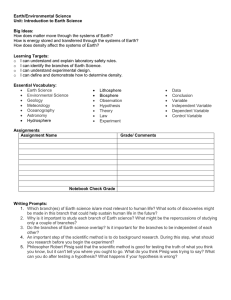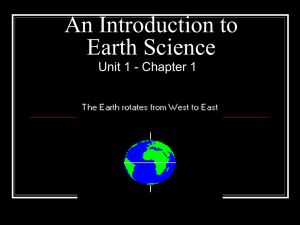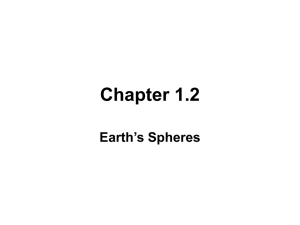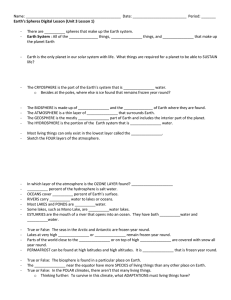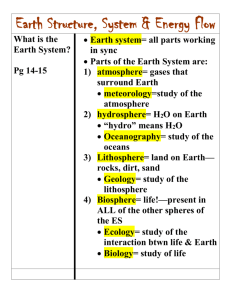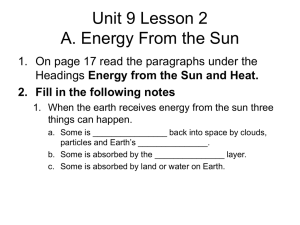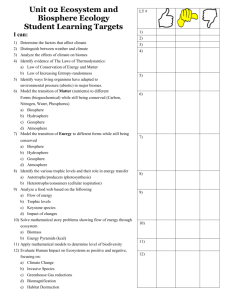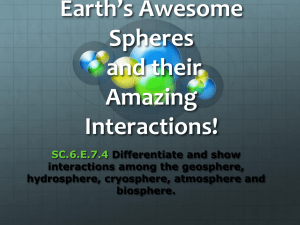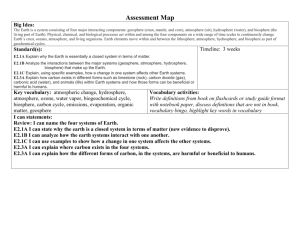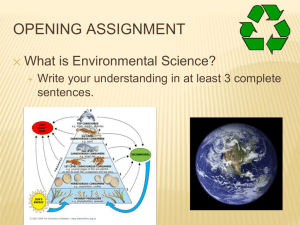Florida Benchmarks
advertisement
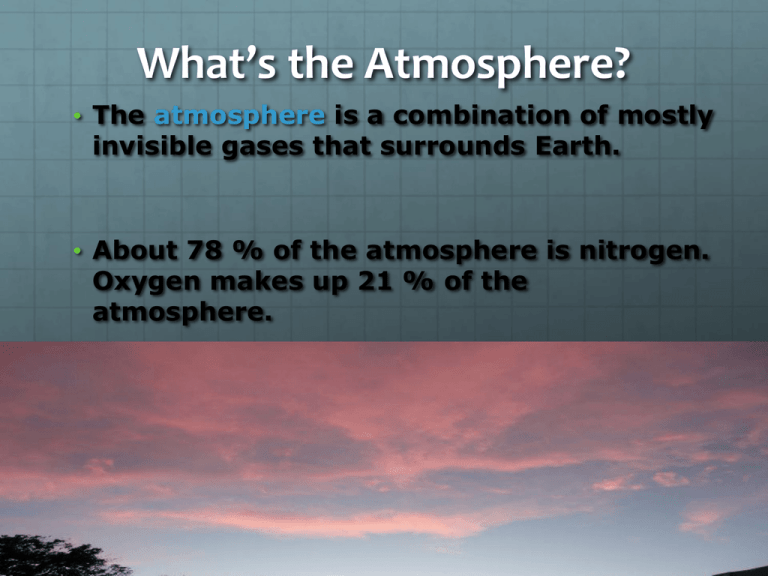
What’s the Atmosphere? • The atmosphere is a combination of mostly invisible gases that surrounds Earth. • About 78 % of the atmosphere is nitrogen. Oxygen makes up 21 % of the atmosphere. What’s the Atmosphere? • Weather, climate, and air pollution are all features or phenomena of the atmosphere. • Features associated with the atmosphere can be studied using radar, satellite imagery, and surface tools like thermometers and barometers. • The biosphere is made up of all living things. • Organisms usually need oxygen or carbon dioxide to carry out life processes. • Liquid water, moderate temperatures, and a stable source of energy are also required for most living things. • The biosphere is divided into large regions with similar mean annual temperature and rainfall called biomes. • Biomes can be terrestrial (on land), marine (oceans and other salt water bodies), or freshwater. • A feature of a living organism that makes it better suited to live in a certain environment is an adaptation. What is the GEOSPHERE? • The geosphere is the mostly solid, rocky part of Earth. It extends from the center of Earth to the surface of Earth. • The crust is the thin, outermost layer of the geosphere. • The mantle is the large partially molten middle layer of the Earth. • The core is the nickel and iron center of the Earth. What is the GEOSPHERE? • The geosphere also includes surface landforms and the constructive and destructive processes that shape them. • The crust and upper mantle make up the lithosphere, which is broken up into large slab called tectonic plates. • Tectonic plates move around slowly on top of the mantle forming mountains and trenches and causing volcanic and earthquake activity. What is the Hydrosphere? • The hydrosphere is the part of Earth that is associated with water in solid and liquid states • Glaciers, oceans, lakes, rivers, marshes, and groundwater are part of the hydrosphere. • Over 71% of our planet is covered in water. • Over 95% of that water is salt water. What is the Hydrosphere? • Water vapor is connected to the hydrosphere by the hydrologic cycle, but is best considered a feature of the atmosphere. • Water is moving through Earth and even into and out of living things at all times! How do Earth’s spheres interact? All of the five spheres of Earth interact as matter and energy change and cycle through the system. • Matter moves between Earth’s spheres via biogeochemical cycles. • Sometimes, matter moves through many spheres before returning to a sphere. • Energy moves between spheres. Energy also moves back and forth between spheres. • Matter and energy are ALWAYS conserved—never created or destroyed Which of Earth’s spheres are Interacting? Explain how. 1 Which of Earth’s spheres are Interacting? Explain how. 1 Which of Earth’s spheres are interacting? Explain how. Which of Earth’s spheres are interacting? Explain how.

